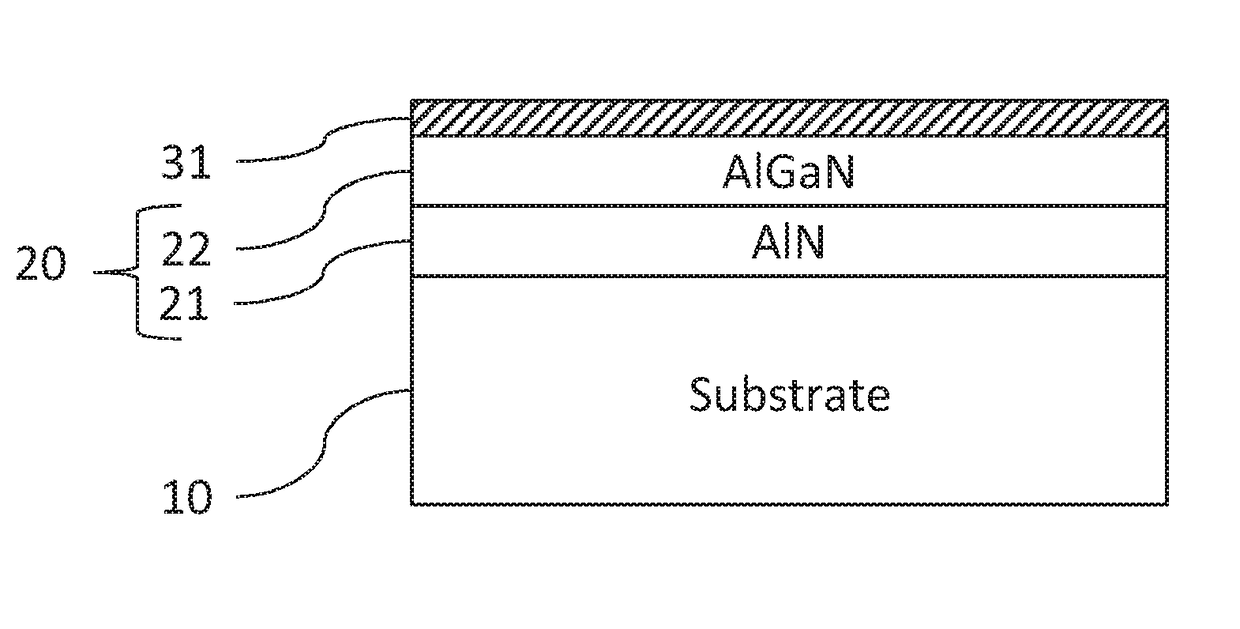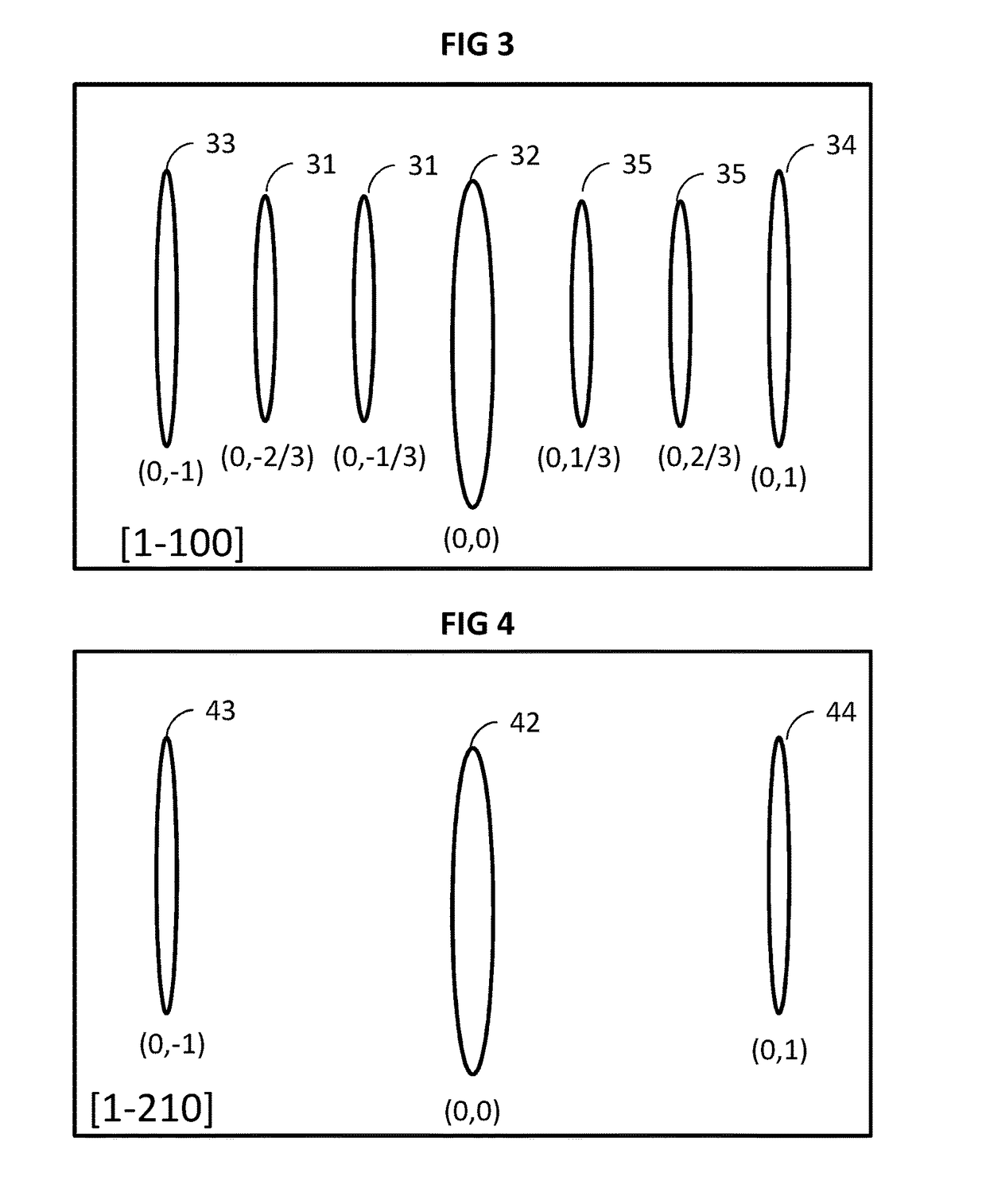Method for producing a passivated semiconductor structure based on group iii nitrides, and one such structure
a semiconductor structure and passivating technology, applied in the direction of basic electric elements, semiconductor devices, electrical equipment, etc., can solve the problems of deteriorating luminescence output, dislocation of threading, and lack of means to achieve i
- Summary
- Abstract
- Description
- Claims
- Application Information
AI Technical Summary
Benefits of technology
Problems solved by technology
Method used
Image
Examples
example of
Production Method
[0148]An example of method according to the invention will now be described.
[0149]The silicon substrate used has a crystallographic orientation (111).
[0150]A buffer aluminium nitride AlN layer is formed by molecular beam epitaxy on the silicon substrate. The formation of the buffer layer is interrupted when the thickness thereof is comprised between 10 and 200 nm.
[0151]The step of deposition of the crystalline layer 1×3 is then carried out. A surface treatment of the buffer layer by molecular beam epitaxy is implemented using silicon atoms and molecules of ammonia NH3. This surface treatment leads to the formation of a new well-defined epi-ready crystalline structure, measurable and identifiable by electron diffraction.
[0152]During the deposition of the crystalline layer, the surface is observed by an electron diffraction technique consisting of sending at grazing incidence a beam of monokinetic electrons onto the crystalline layer in the course of formation in orde...
PUM
 Login to View More
Login to View More Abstract
Description
Claims
Application Information
 Login to View More
Login to View More - R&D
- Intellectual Property
- Life Sciences
- Materials
- Tech Scout
- Unparalleled Data Quality
- Higher Quality Content
- 60% Fewer Hallucinations
Browse by: Latest US Patents, China's latest patents, Technical Efficacy Thesaurus, Application Domain, Technology Topic, Popular Technical Reports.
© 2025 PatSnap. All rights reserved.Legal|Privacy policy|Modern Slavery Act Transparency Statement|Sitemap|About US| Contact US: help@patsnap.com



